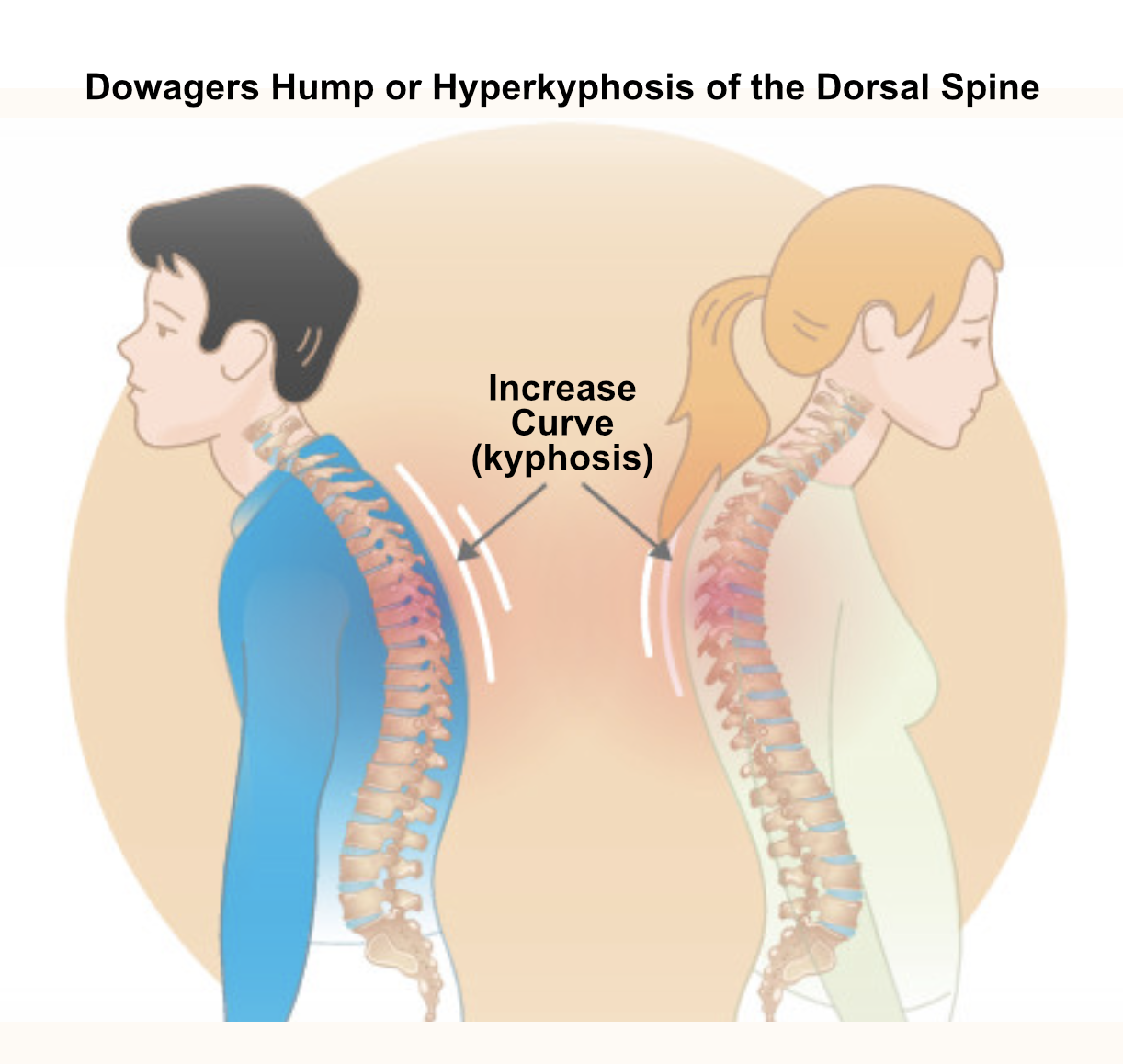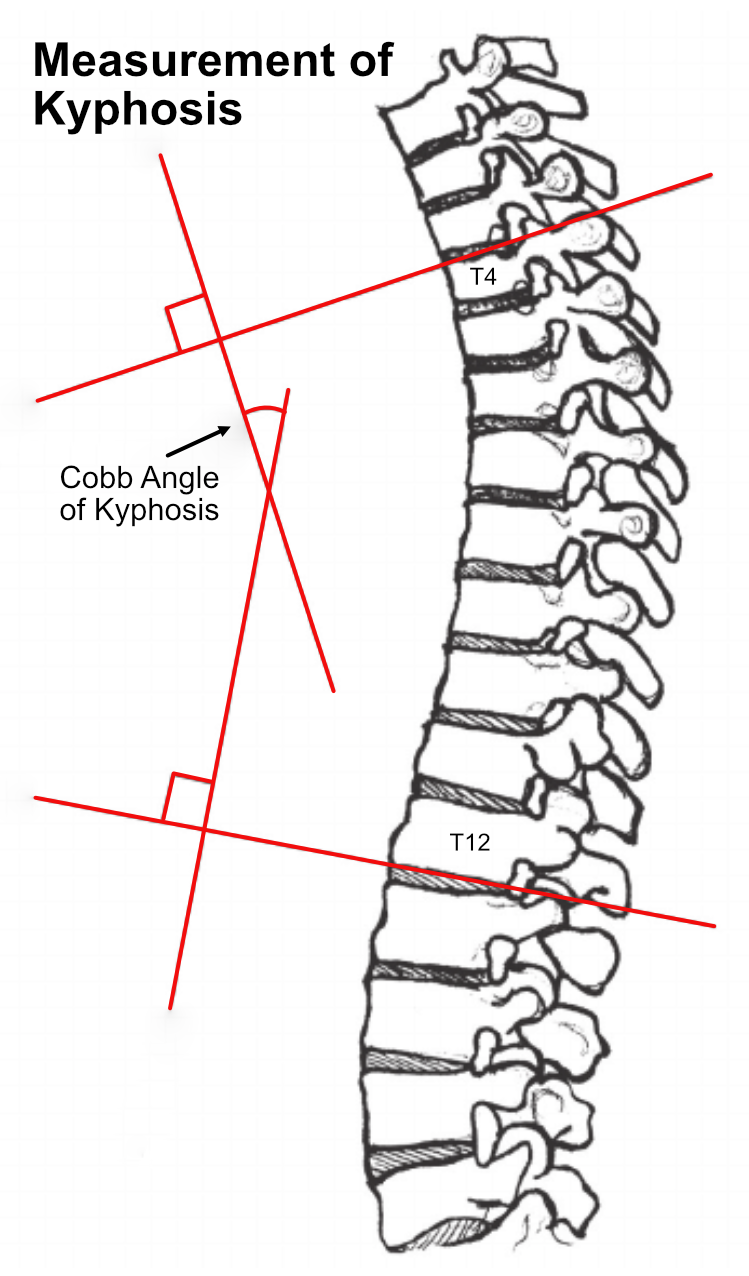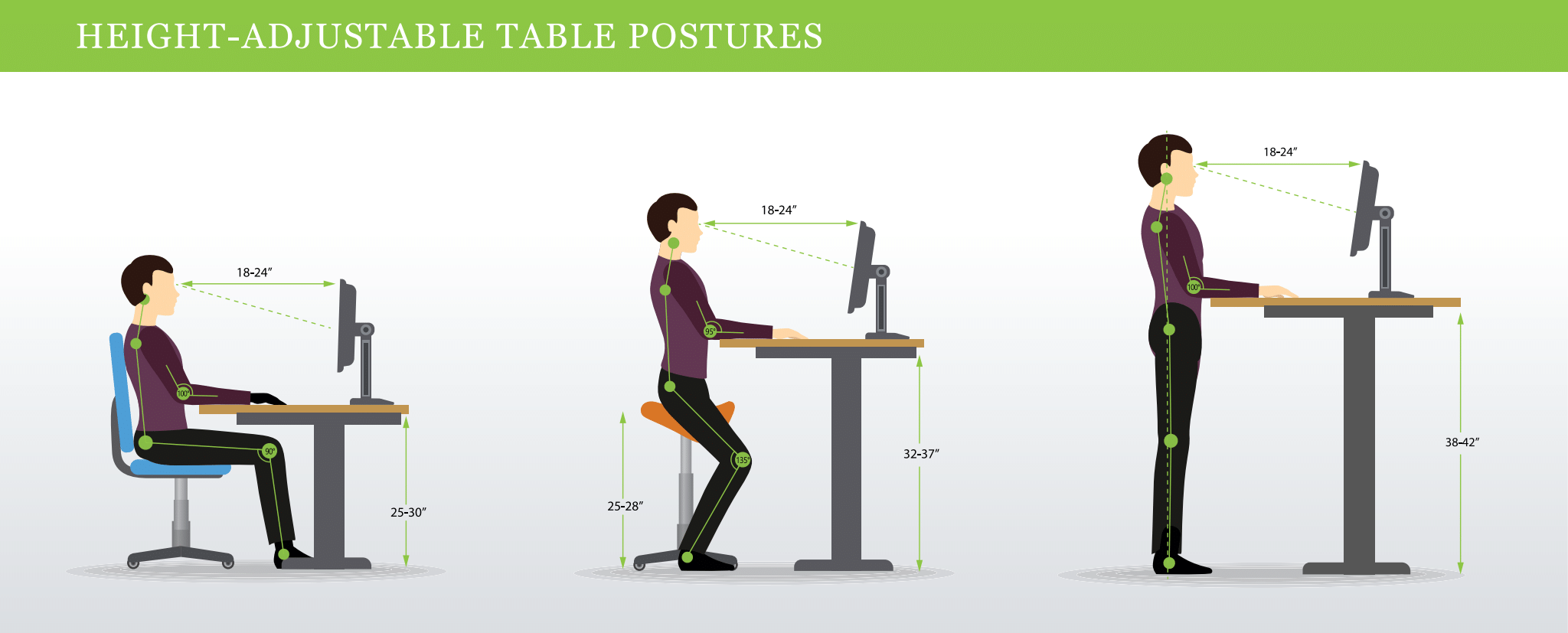Dowager’s hump is an excessive curve or ‘hump’ at the top of the mid-back spine below the neck. Medically speaking, it’s an increase in the dorsal or thoracic curve, the kyphosis, so-called hyperkyphosis. In common language it’s also known as ’round back’ or ‘hunchback’ or simply ‘kyphosis’. It’s not usually a serious condition, however it can cause worry. It affects up to 40% of us over the age of 55.
Common symptoms and signs of hyperkyphosis
The most common sign of a dowager’s hump is abnormal kyphosis and the appearance of a lump or hump at the top of the spine. It goes hand-in-hand with poor posture. Patients are sometimes unhappy about how it looks, which can be distressing, or concerned it may progress and be worse. Most often, symptoms remain constant and do not become progressively worse with time.
Symptoms of Dowager’s Hump
- Swelling feeling or hump at the top of the back
- Chronic back pain into the neck and shoulders
- Muscle fatigue and tiredness
- Poor posture, finding it hard not to slouch
- Loss of height, difficulty standing tall
- Back stiffness, especially in the upper back
- Impaired and restricted mobility
- Protruding abdomen
- Difficulty breathing if the kyphosis puts pressure on the lungs, causing reduced rib movement
- Digestive symptoms and difficulty swallowing if the kyphosis compresses the digestive tract
- Depression and anxiety about the posture, negatively affecting quality of life

Excessive hyperkyphosis
This can generally reduce physical function.
- Difficulty getting up and out of a chair
- Reduced balance
- Slower gait, possibly with a wide stance for support
- Postural sway with osteoporosis
- Climbing stairs can be difficult
- More prone to falls

Dowager’s hump, especially if severe, is disfiguring and can have a psychological affect. Younger adults can feel embarrassed and depressed. Older adults may suffer a reduced quality of life with difficulties of everyday living and functioning can feel isolated socially. Both men and women can feel less confident with their health which can lead to going out let less, and further impairment in health and quality of life.
Causes of Dowager’s Hump
- Postural development during childhood, continuing into adult life.
- Degenerative disc diseases, which is shown on x-ray.
- Vertebral Fractures, causing the vertebrae to ‘wedge’, increasing the kyphosis.
- Osteoporosis softens the bones causing them to become weak, with lack of calcium and vitamin D. With time and daily stresses it causes compression, as the vertebrae can wedge, which increases as the density of the bone mineral decreases. This can lead to compression fractures. A vicious circle of degeneration – wedging – fractures – further degeneration sets in that increases the kyphosis.
- Weak spinal extensor muscles are linked with increased kyphosis. In healthy post-menopausal women, the weaker the spinal muscles, the greater the kyphosis.
- Scheuermann’s Disease, where the vertebrae grow unevenly with ‘wedging’ during adolescence, mostly in boys, causing kyphosis.
Diagnosing Dowager’s Hump

X-ray, a CT scan, and an MRI may be used.
Osteoporosis in the advanced stages can be seen on X-ray.
A bone density (Dexa) scan can assess the degree of osteoporosis.
Measurement Of Hyperkyphosis
The kyphosis angle (or “Cobb’s angle”) is measured on x-ray by drawing lines along the vertebrae at T4 and T12, the start and end of the kyphosis. Perpendicular lines then give the angle of the kyphosis. A 40° curve in young adults is considered normal, but curves over 40° can start to give problems and create a small hump at the back of the neck.
As we grow from childhood to the age of 30, the angle of the spine changes from 20° to 29°. After about forty, the angle increases as ageing, wear and tear and degeneration starts, more rapidly in women, from about 43° in 55-60 years old to 52° at 80 years of age. The spine shortens and the average person loses about half an inch every 10 years due to spinal compression. As the kyphotic angle increases, physical performance and quality of life often decreases, making early prevention for hyperkyphosis a top priority.
Treatment and Prevention of Dowager’s Hump
The main focus with dowager’s hump is to prevent deterioration, keeping the spine flexible and mobile and learning how to avoid activities that worsen the kyphosis.
Chiropractic treatment to free tension in the kyphotic spine
Clients often report with Chiropractic adjustments that they feel ‘more upright’ or that their spine is not ‘dragging them down’ as much with spinal adjustments to the middle back, which can help them to maintain their posture. This is one aspect to treatment, but prevention is key. It may be for some clients with a long term chronic tightness that maintenance treatments can have a huge benefit, but the more we can help to maintain the freedom and flexibility in the spine in our every day lives, the better.
The Alexander Technique
Posture is affected by the balance of the whole body, and Alexander Technique is excellent for learning how to look after the posture, learning to be more mindful when we are slumping, learning to vary our positions or work activities.
If you’re slouching, change position!
Learning to be aware when your spine is collapsing or you are sitting or standing in a slouched position and then learning how to allow the spine to release, lengthen and uncurl the spine is key. For example with sitting work, a sit-stand desk can allow you to change your position, or with a move stool sit more actively in a dynamic flexible way.

Rest the spine to reduce pressure on the kyphosis

Sometimes lying down to rest the spine for regular short periods is the most effective way of allowing the spine to uncurl and reduce the pressure on the kyphosis in the spine. Find more information on resting the back while lying down here.
Forcing an upright posture can create more pain
Many methods or treatment approaches focus on strengthening the spine, however, my Chiropractic and Alexander Technique approaches care from almost the opposite direction, keeping the spine mobile, relaxed and balanced and not forcing or tensing muscles in ‘trying’ to sit up or hold the shoulders back. There is a huge danger that forcing an upright posture, trying to hold yourself up straight can lead to more tension, stress and pain, which then just simply causes you to collapse and slouch. Finding a balanced posture is about having the whole body balanced, relaxed and not in tension, then the spine can release and find a less slumped position.
Further reading
Please find more information on dowager’s hump in this article from the National Library of Medicine.